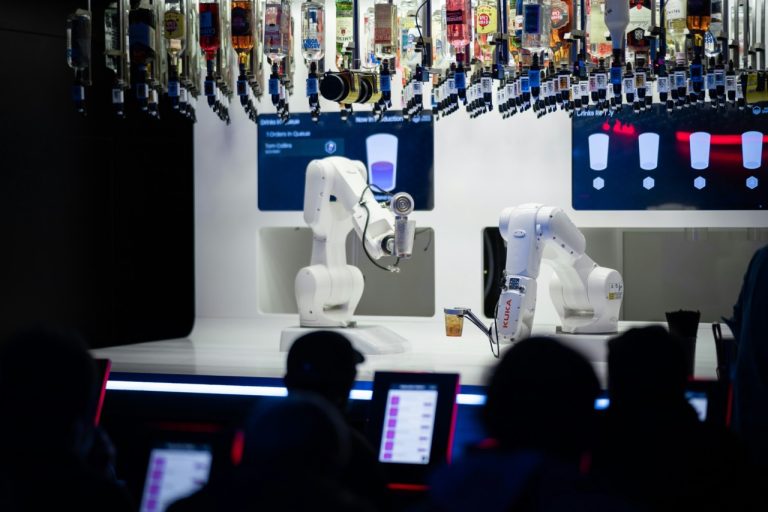
1. An Overview of Food Delivery: Regulatory Requirements and Challenges
The rapidly growing restaurant delivery company places increasingly advanced responsibilities and regulatory demands on each company. This is how we look at it at Celadonsoft: a delivery IT solution is less about flashy UI and rapid order processing, and more about thriving amid growing regulatory scrutiny and changing standards with the aid of compliance AI.
Why have online food delivery services attracted regulators’ attention? It is due to some basic concerns:
- Scaling up order volume and user base. Larger numbers of users bring higher responsibilities—both for service quality and data security.
- Regulatory web. Everything and anything is regulated, from food safety rules to data privacy rules.
- Complex supply chain. Each component of the supply chain—suppliers, couriers, and platforms—presents own compliance requirements and risks.
Step back and observe: these pitfalls are a reflection of sweeping industry trends. Break them down and let’s examine them.
1.1 Food Delivery Trends Today
- Expanding market exponentially: Russia’s food delivery market, for example, has tripled within five years and keeps on expanding with a rise in online orders.
- Increasing competition: New services crop up all the time, and so everyone must enhance quality and conformity.
- Convergence with broader digital ecosystems: Food delivery is being integrated into everything from mobile banking to healthcare management systems.
And the rules no longer stand still. Stricter data security, labeling, storage, and food safety legislation is today’s reality. For IT departments, it no longer is sufficient just to create functionality; today, you need to know about the legal landscape too.

1.2 The Importance of Regulatory Compliance for Business
Ignore rules and you’re doomed—here’s why:
| Reason | What Happens If Ignored | Upside of Compliance |
| Reputation risk | Lost trust, negative reviews | Increased loyalty, customer base expansion |
| Financial warnings | Fines and suspension of account and services | Predictability, no surprise |
| Operational disruption | Downtime and app outages | Smoother service and improved processes |
| Legal Liability | Legal suits and litigation | Protection against risk, legality |
In addition, following rules also contributes to establishing trust with customers and partners, reducing risk, and even leveraging compliance to achieve product quality benefits.
We see at Celadonsoft: it is less “check the compliance box” for IT organizations and more about incorporating such requirements into product planning. Compliance checks need to be automated—reducing manual effort, error rates, and lost time.
In the remainder of this article, we’ll delve into which areas of regulation most affect delivery app operations and business expansion. For now, however, this is the point: compliance is not a roadblock to success—it’s the key to lasting success.
3. Automation as a Means of Achieving Greater Compliance
With today’s speed of food delivery, regulatory automation is increasingly taking center stage to meet regulatory needs. Celadonsoft’s perspective: without decent tech, firms risk fining and losing customer trust. Automation is so crucial – and what is it facilitating today to make compliance no longer a stretch? Learn more about Compliance automation AI solutions that underpin this shift.
3.1 How Technology Supports Compliance
Regulations continuously change—product safety, user data reporting, and so on. Manual compliance is a nightmare:
- Data volume is large, errors are costly
- Document and guide writing is time-consuming.
- You need continuous monitoring of legal developments
- Auditing and reporting take time and resources.
Automation eliminates human error, accelerates checks, and enables you to react quickly to new legislation. You can monitor compliance in real-time and even anticipate threats due to AI and machine learning. The result: less punishment, enhanced service.
3.2 Popular Automation Tool
For developers and DevOps teams handling applications for delivery, next-gen compliance requires leveraging the following tools:
- Compliance management software like OneTrust, LogicGate: aggregate all the requirements, automatically monitor, and create summary audit reports
- Data monitoring and analytics software: detect safety or standards issues even before initiating order preparation
- Personal data protection: ensure encryption and consent of users—critical for GDPR and similar acts
- Automated quality-control systems: IoT and sensors track transit and storage conditions of food
Celadonsoft embeds the capabilities within delivery applications so it is easy and seamless to maintain compliance for both support and product teams. Technology is less about regulatory compliance and more about achieving reliability and competitive advantage.
Automation investment is not only a means of evading penalty—through it, you gain client trust, refine your operations, and get your business ahead of the next regulatory hurdle. Join forces with Celadonsoft and let compliance become an opportunity for expansion.
4. Compliance Automation Best Practices
Automation of compliance isn’t a choice—without it, food delivery applications simply can’t keep up with increasing complexity. Celadonsoft’s strategy: intelligent integration of automation is an intentional—not merely technical—process, involving a set of essential steps.
4.1 Phases of Automation of Compliance
Automation is usually applied on a series of connected steps:
- Requirements gathering. Study existing regulations carefully, involving compliance officials and legal counsel to define key pain points to automate.
- Tech selection. Choose tools suited to your business size, app specifics, and existing stack.
- Architecture. Create the monitoring, reporting, and alarm modules, powered by policy engines, to enable you to detect and prevent intrusions in real-time.
- Development and testing. Code with scenarios for regulators in mind and test thoroughly to avoid failures.
- Rollout and staff training. Automation only works when your staff “gets” it—get them trained and create clear instructions.
- Remaining current and updated. If and when regulations evolve, so should your system—continuously make adjustments and improve solutions to fit changing standards.
4.2 Success Stories
Automation works best when it’s systematic. Here are some actual Celadonsoft examples:
- Client A: One of the national shipping firms used AI-powered cameras to check packaging and renew expiry dates, minimizing complaints by 35% within six months.
- Client B: An online food technology company automated privacy policy management, reducing data-leak possibilities and achieving GDPR compliance—essential for European expansion.
- Client C: An application for health foods adopted automated management of regulatory documents, streamlining external audits and inspections for compliance.
Automation must be scalable and responsive. You need standardized APIs and microservices so your system is agile—ready to plug new modules when circumstances change, without having to rebuild from scratch.
5. Risks and How to Reduce Them
No automation, however expertly engineered, is immune to glitches. Celadonsoft speaks from experience: it’s not just a matter of automation, but of anticipating glitches and roadblocks. Here are some standard roadblocks and how to defuse them:
- Inadequate understanding of regulation. If your automation is rooted in no longer accurate rules, your system quickly becomes a problem instead of a solution.
- Too strict logic. If exceptions can’t be allowed within processes, too many valid transactions are inhibited and it hurts the user experience.
- Opaque reporting. Without visualization and auditing, it becomes increasingly difficult to identify and correct errors quickly.
- Overlooking the human factor: If your employees are not properly trained and supported, human errors and lapses can slip through automation laps.
6. The Future of Compliance for Food Delivery
The future of delivery cannot be disentangled from the constantly evolving regulatory framework. For us at Celadonsoft, we can see: intelligent adaptation is the future. Innovation and technology are not merely enablers—they’re revolutionizing the business.
6.1 Trends and Innovations
Compliance is shifting to intelligent systems, which are predictive and autonomously respond to changing rules through advanced policy engines and machine learning. Trends:
- Artificial Intelligence and Machine learning. These enable monitoring of compliance in real time and predicting threats from large data sets.
- Transparency of blockchain. Immutable distributed ledgers generate unalterable storage and safety inspection records for easier auditing.
- Computerized reports and warnings. Systems already in place automatically generate necessary reports and notify staff members of regulation changes.
- Government registry integrations. Interfaces for direct data exchange with regulators will facilitate faster permits and reduce bureaucracy.
6.2 Impact of Evolving Regulations on Business
Regulatory conditions change quickly, sometimes suddenly. For meal delivery firms, this means sustained flexibility. Some of the primary effects are:
- Stricter controls. Increased regulation means increased responsibility, and it requires greater checks on couriers and suppliers.
- Transparency: an essential value. Customers want their food to be secure and their personal data protected—there must be investment in technology to prove it.
- Agility advantage. Companies that respond quickly are not penalized and keep their customers’ trust.
- Shift to “smart” contracts. Computerized contracts reduce human error, so business is less prone to variation.
Celadonsoft’s strategy: don’t just react to new regulations—get ahead of them. And it means it. Which means sustained technology innovation, developing compliance into each product and process.
Strategic compliance and innovation are key to leadership for future generations of food delivery.

7. Conclusion: The Strategic Value of Compliance
In today’s food delivery world, survival is about intelligent, disciplined compliance and savvy use of compliance AI. Celadonsoft, with its many years of automation and compliance experience, holds: ignoring the rules isn’t just dangerous—it’s a punch to your company and user trust.
Important points to develop an effective compliance strategy:
- Proactivity and Awareness
Don’t wait, anticipate. Monitor shifting rules to change on schedule. Playing catch-up is costly and provides worse service. - Add Automation
Automated systems are not a luxury. They enable problems to be identified and resolved sooner, reduce human error, and enhance accuracy. - Multidisciplinary Collaboration
Compliance isn’t legal’s responsibility only—IT, product, and support all need to own it. Collaboration is the cornerstone of good compliance. - Flexible, Scalable Solutions
Solutions must accommodate evolving regulation and expansion of business. Platform-based solutions can adapt and develop quicker. - Ongoing Training and Development
Rules change; your team’s skill set should too. Periodic refresher training allows teams to seamlessly integrate new procedures and methodologies. - Transparency and Customer Communication
Transparency regarding data, food quality, and delivery processes builds trust among users and lowers reputation risks.
In practice, Celadonsoft recommends this food delivery app compliance guide:
- List and prioritize current regulatory demands, most important to business first.
- Choose automation tools with specialist skills for monitoring and auditing.
- Make sure to incorporate your infrastructure so everything is working together.
- Train and develop your team with regular knowledge sessions.
- Create incident response plans, including communication to customers and regulators.
- Review strategy and tools periodically as markets and law change.


